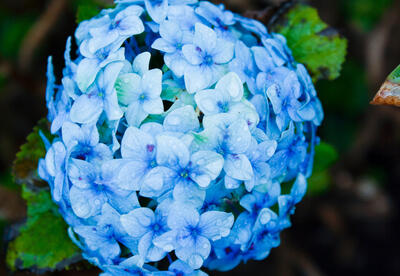![Tospoviruses & Thrips: Uninvited Guests in your Garden [Orchid Health Blueprint]](https://campussuite-storage.s3.amazonaws.com/prod/1558746/1d4af5d8-7654-11e9-b7a3-12e0f3664752/2920923/e45cc916-f5d9-11ef-a65c-0e55e4e76f23/optimizations/2097152)
Figure 1: Pesky thrips: unwelcome guests that carry viral threats.
In a previous installment of the Orchid Health Blueprint Series, we discussed CymMV and ORSV, which only infect orchids and are the most documented and studied viruses of orchids. While they are the most common, they are not the only viruses are known to infect orchids. Many other viruses have spread to orchids which have a wide host range that includes house plants, garden plants, or even field crops.
All of these may be transmitted mechanically with contaminated tools or media. Some of these other viruses are also spread by insects or mite vectors, which if present, must also be eradicated to prevent further spread of the virus. These vectors may transmit viruses in one of two ways: a persistent manner (mites, nematodes or thrips) which transmit the virus for weeks after last coming in contact with the virus; or non-persistent (aphids) which only transmit the virus for up to a few hours after exposure to the virus.
Systemic infections are common in orchids, meaning that once the virus has infected its host, the virus may be found throughout the plant.
For some viruses, especially the Tospovirus group, the virus may infect its host locally, meaning that the virus is limited to localized parts of the plant. This usually manifests as lesions or chlorotic spots, and the virus is present only in the immediate vicinity of the symptoms. Both infection types are equally contagious. Below are the most common Tospoviruses that infect orchids:
Capsicum chlororsis virus (CaCV)

Figure 2. Capsicum chlorosis virus infected leaf. Dr. Parthasarathy Seethapathy, Amrita School of Agricultural Sciences, Bugwood.org
Capsicum chlorosis virus is an emerging Tospovirus (Orthotospovirus) transmitted by several species of thrips.
To date, CaCV has been reported in Australia, China, Greece, India, Iran, Taiwan, Thailand, the United States and Vietnam.
As a still-emerging threat, the full host range for this virus is yet to be determined. Known vegetable hosts for Capsicum chlorosis virus include peppers, tomatoes and zucchini. Other documented hosts include Hoya (“Wax plant”), groundnut/peanut and Phalaenopsis orchids. Several species of weeds are also known to be reservoir hosts for CaCV.

Figure 3. TSWV Orchid Symptoms . Jeffrey W. Lotz, Florida Department of Agriculture and Consumer Services, Bugwood.org
Symptoms include necrotic ringspots, chlorotic ringspots and leaf mottling. Necrotic symptoms may also be visible on the fruit of infected pepper plants.
Tomato spotted wilt virus (TSWV)
Tomato Spotted Wilt Virus (TSWV) is another thrips-transmitted virus in the Tospovirus genus that affects orchids, causing ringspots, necrotic streaks, and plant decline. For systemic infections, symptoms usually occur as ring or spot patterns on the foliage, which can be sunken into the leaf surface. With no cure, early detection and prevention are crucial.
Impatiens necrotic spot virus (INSV)
Impatiens necrotic spot virus (INSV) isn’t limited to impatiens. Like the related CaCV and TSWV, it is also a serious threat to orchids. Transmitted by thrips, this Tospovirus can cause necrotic lesions, stunted growth, and weakened plants.

Figure 4: INSV foliar symptoms
If you have greenhouse-grown orchids, INSV could be lurking unnoticed.
Stay tuned for the next Orchid Health Blueprint installment!
Contact us
We’d love to talk with you about how we help you grow a healthy and profitable orchid collection by empowering you to detect and remove plants impacted by pathogens before they spread and cause irreversible damage.
This article was adapted from Don’t put on the virus blinders, authored by Agdia team members Janet Lamborn & Matthew Chambers, originally published in Phalaenopsis Journal Vol. 23(4): 6-10





